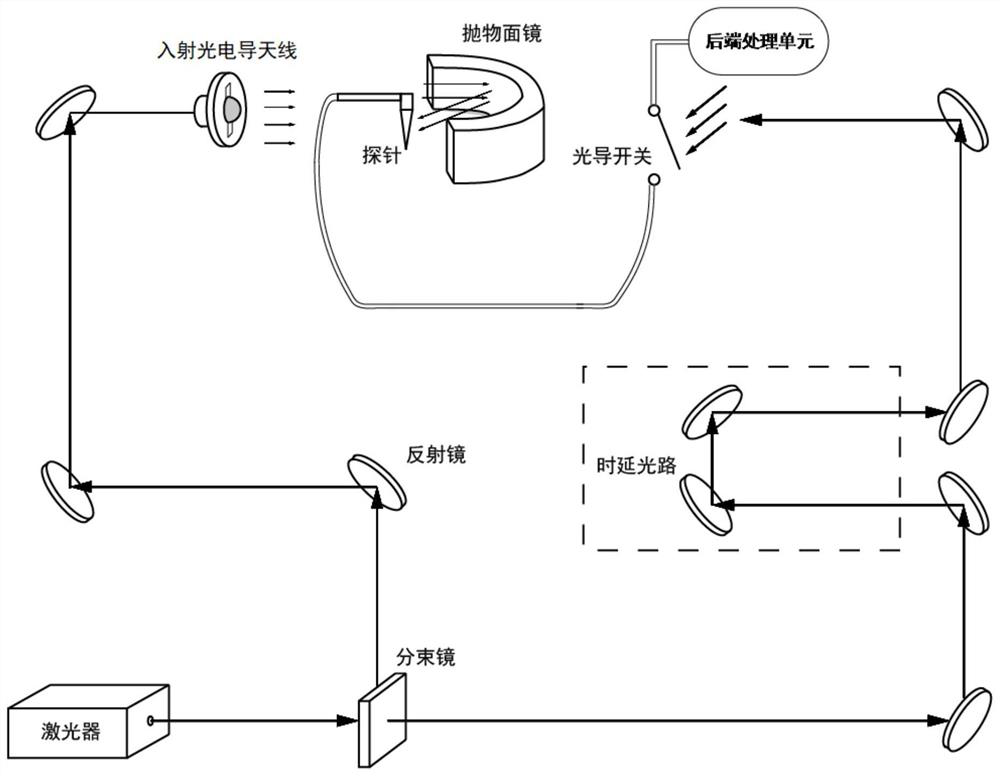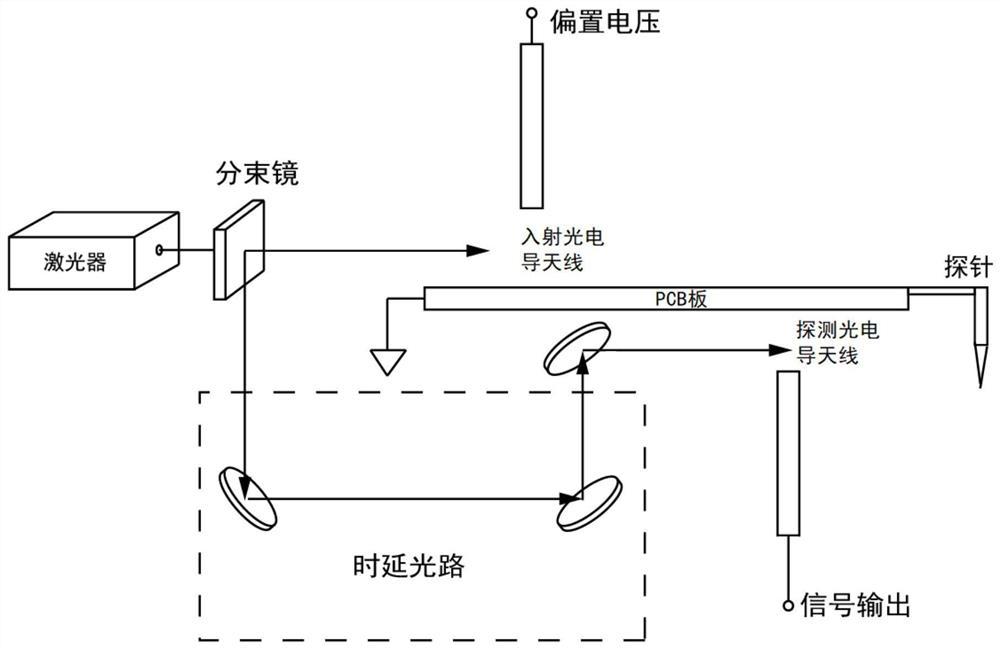Terahertz near-field imaging system and method
A terahertz near-field and imaging system technology, applied in the field of terahertz imaging, can solve problems such as low signal-to-noise ratio, signal strength and signal-to-noise ratio decline, and achieve the effects of simplifying processing difficulty, optimizing length, and simplifying structure
- Summary
- Abstract
- Description
- Claims
- Application Information
AI Technical Summary
Problems solved by technology
Method used
Image
Examples
Embodiment 1
[0043] Such as figure 1 A terahertz near-field imaging system is shown, including a laser, an incident unit, a delay unit, a back-end processing unit, and a metal probe; where:
[0044] A laser is used to generate a femtosecond laser, the femtosecond laser is divided into incident light and detection light by a beam splitter, the incident light is transmitted to the incident unit, and the detection light is transmitted to the delay unit and then transmitted to the the photoconductive switch and trigger the photoconductive switch to conduct;
[0045] The incident unit includes an incident photoconductive antenna, a parabolic mirror and at least one reflective mirror, the incident photoconductive antenna is used to receive the incident light whose optical path is adjusted by the reflective mirror, and generate an incident signal incident to the parabolic mirror, and the parabolic mirror is used for Focusing the incident signal on the metal probe, the incident signal generates a...
Embodiment 2
[0053] Such as figure 2 A terahertz near-field imaging system is shown, including a laser, an incident unit, a delay unit, a back-end processing unit, and a metal probe; where:
[0054] A laser is used to generate a femtosecond laser, the femtosecond laser is divided into incident light and detection light by a beam splitter, the incident light is transmitted to the incident unit, and the detection light is transmitted to the delay unit and then transmitted to the the photoconductive switch and trigger the photoconductive switch to conduct;
[0055] The incident unit includes an incident photoconductive antenna, the incident photoconductive antenna is connected to the metal probe through a transmission line, and the incident photoconductive antenna is used to generate an incident signal under the excitation of incident light, and the incident signal is conducted to the The metal probe generates a local field at the tip of the metal probe, and the local field is used to excit...
Embodiment 3
[0063] The terahertz near-field imaging method based on the imaging system in the above embodiment includes the following steps:
[0064] The femtosecond laser is divided into incident light and detection light by a spectroscope;
[0065] The incident light is converted into an incident signal. The incident signal excites the metal probe to generate a local field, and the local field excites the sample in the detection direction of the metal probe to generate a near-field signal. The near-field signal is coupled to a current signal on the metal probe and then passed through the metal probe. The probe and the transmission line are transmitted to the photoconductive switch;
PUM
 Login to View More
Login to View More Abstract
Description
Claims
Application Information
 Login to View More
Login to View More - R&D
- Intellectual Property
- Life Sciences
- Materials
- Tech Scout
- Unparalleled Data Quality
- Higher Quality Content
- 60% Fewer Hallucinations
Browse by: Latest US Patents, China's latest patents, Technical Efficacy Thesaurus, Application Domain, Technology Topic, Popular Technical Reports.
© 2025 PatSnap. All rights reserved.Legal|Privacy policy|Modern Slavery Act Transparency Statement|Sitemap|About US| Contact US: help@patsnap.com


